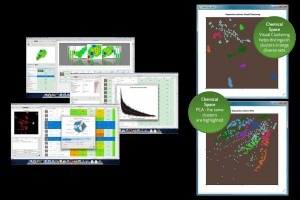
Optibrium has launched Stardrop 5.1, an upgraded version of its support tool for drug-discovery scientists.
The Stardrop 5.1 software package employs predictive capabilities to quickly target compounds with a good balance of properties, reducing wasted effort and speeding progress to identify effective lead and candidate drugs.
Stardrop's approach to 'multi-parameter optimisation' explicitly accounts for the uncertainty in drug-discovery data, whether due to experimental variability or predictive error, to provide scientists with a rigorous, objective analysis on which to make rational decisions.
As well as compatibility with the Apple Mac, Stardrop 5.1 offers a number of enhancements.
There is a new method for creating 'chemical space' visualisations based on the latest machine-learning algorithm for 'visual clustering' that helps users to explore the diversity of a project's chemistry and identify 'hot spots' of high-quality chemistry for further investigation.
There are also improvements to Stardrop's plug-in modules, such as the Auto-Modeller, which includes a 'Random Forests' technique for building predictive models tailored to a project's chemistry and data.
The addition of this method has also led to improved QSAR models in the ADME QSAR module, which provides predictions of key ADME properties.
Stardrop's P450 metabolism module has been upgraded to provide improved prediction of regioselectivity and lability of metabolism by Cytochrome P450 enzymes, specifically around N-oxidation pathways.
Finally, in response to user feedback on the new Nova module, further advances allow the generation of novel, relevant compound ideas, prioritised against a project's required property profile, starting from multiple initial structures and filtered according to user-specified rules to avoid unwanted substructures.




